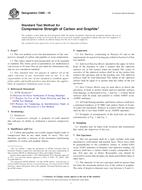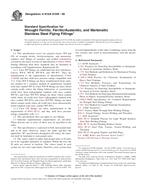1.1 This guide covers procedures for measuring the bioaccumulation of sediment-associated contaminants by infaunal invertebrates. Marine, estuarine, and freshwater sediments are a major sink for chemicals that sorb preferentially to particles, such as organic compounds with high octanol-water-partitioning coefficients (Kow) (for example, polychlorinated biphenyls (PCBs) and dichlorodiphenyltrichloroethane (DDT)) and many metals. The accumulation of chemicals into whole or bedded sediments (that is, consolidated rather than suspended sediments) reduces their direct bioavailability to pelagic organisms but increases the exposure of benthic organisms. Feeding of pelagic organisms on benthic prey can reintroduce sediment-associated contaminants into pelagic food webs. The bioaccumulation of sediment-associated contaminants by sediment-dwelling organisms can therefore result in ecological impacts on benthic and pelagic communities and human health from the consumption of contaminated shellfish or pelagic fish.
Product Details
- Published:
- 02/01/2016
- Number of Pages:
- 58
- File Size:
- 1 file , 600 KB


